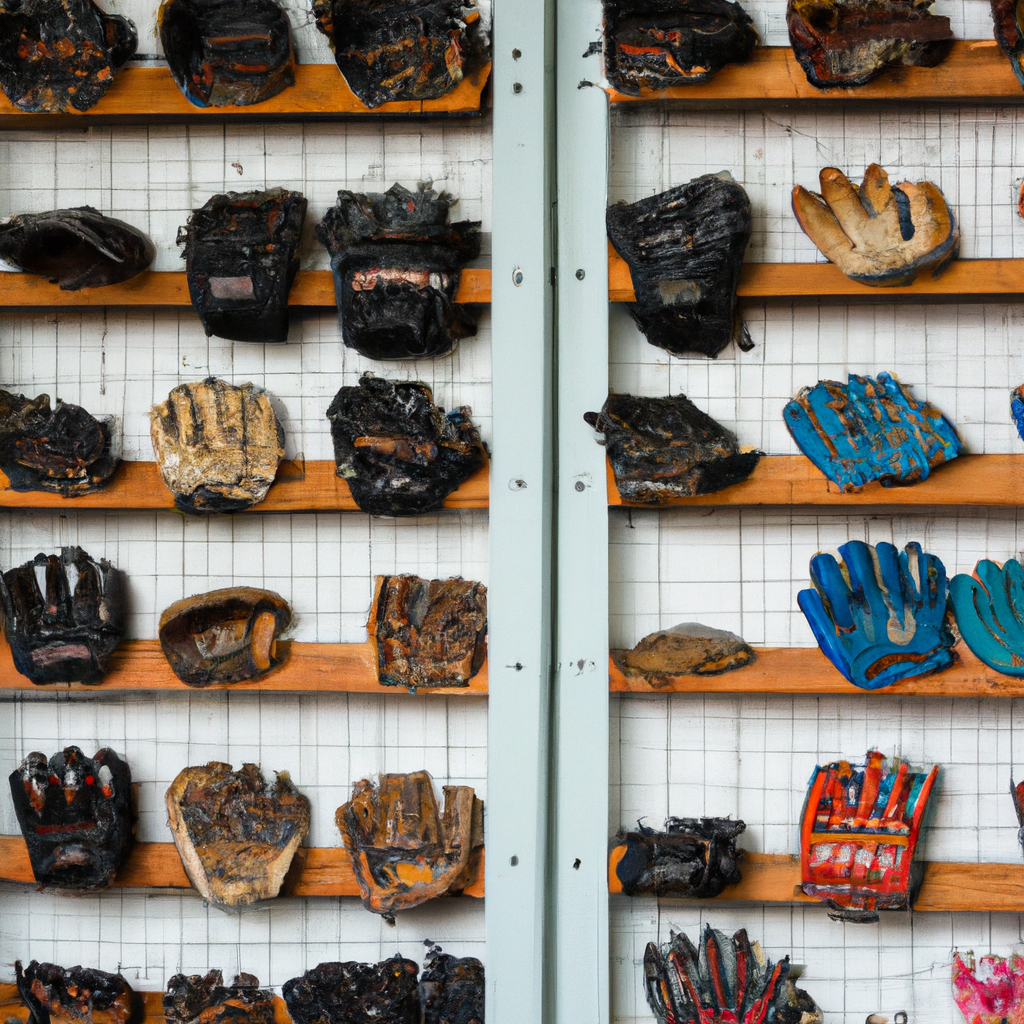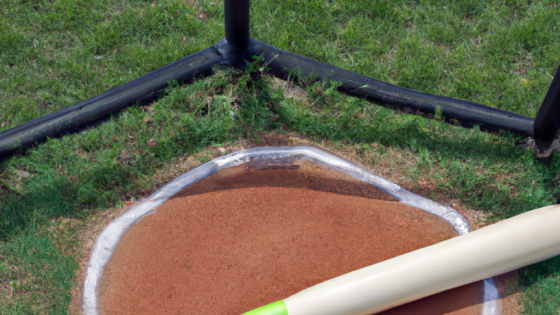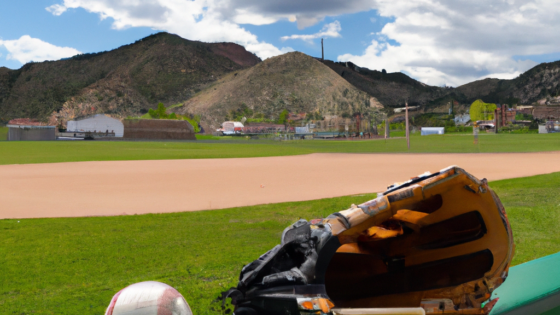Introduction
Introduction:
Baseball is a game that requires specific equipment, and one of the most important pieces is the baseball glove. The right baseball glove makes all the difference in catching, throwing, and fielding. There are different types of gloves for different positions, and choosing the right one can be overwhelming. In this five-part series, we will guide you on how to choose the right baseball glove for your position.
We will cover the following positions:
1. Introduction
2. Outfielders
3. Infielders
4. Pitchers
5. Catchers
Before we dive into the details, let’s take a look at some general considerations to keep in mind when shopping for a new baseball glove.
Firstly, consider your skill level. If you are a beginner, you may not need an expensive, high-end glove. You can always upgrade later. Also, take into account the level of play, whether you are playing in a recreational league, school, or college. The level of play may determine the quality of glove you need.
Next, consider the size of your glove. Gloves come in various sizes, and a glove that is too big or too small can hinder your performance. The size of your glove should match your hand size and the position you play.
Lastly, consider the type of leather used for the glove. Leather has varying degrees of durability, feel, and price. Synthetic gloves tend to be cheaper but are not as durable as leather gloves.
Now that you have some general considerations in mind let’s dive into the different types of gloves needed for each position.
Understanding Glove Webbing
Section 2: Understanding Glove Webbing
When it comes to baseball gloves, the next thing to consider after hand size is webbing. The webbing is the part of the glove that stretches between the fingers and the thumb, providing a catching surface. However, different webbing styles can affect the type of catch a player can make.
The two main types of webbing are closed and open. Closed webbing forms a solid pocket that can make it easier to catch and secure the ball. This makes it a good choice for infielders and pitchers who need to catch the ball quickly and efficiently. Open webbing, on the other hand, allows for greater visibility and flexibility. This makes it a popular choice for outfielders who need to track fly balls while running.
In addition to open and closed webbing, there are several other webbing styles available, including H-Web, I-Web, and trapeze webbing.
H-Webbing features two vertical bars that connect to a horizontal bar, forming an H-shape. This design is ideal for infielders because it creates a deep pocket that can easily trap and secure the ball.
I-Webbing is similar to H-Webbing, but features a single vertical bar rather than two. This type of webbing is commonly used by outfielders because it allows for greater visibility and can help fielders more easily track fly balls.
Trapeze webbing is a more complex design that creates a deep pocket and provides the fielder with greater flexibility. It is often used by outfielders, as well as some infielders.
Ultimately, the webbing style that is right for you depends on your position and personal preference. Take the time to try out different styles and see what feels most comfortable and effective for you.
Glove Size and Fit
Section 3: Glove Size and Fit
Choosing the right glove size and fit is crucial for peak performance on the field. The ideal glove size will depend on your position and hand size, and finding the perfect fit will help you to catch and field balls more easily.
Hand Size
Before looking for the ideal glove size, you need to measure your hand. To do this, measure from the tip of your middle finger to the base of your palm, then add an inch or two to find the right glove size. If your measurement falls between two sizes, round up to the nearest size.
Position-Specific Sizes
Different positions require different glove sizes. Infielders require a smaller glove size, typically between 10 and 12 inches, for better control and quick transfers. Outfielders, on the other hand, require a longer glove, often 12 to 14 inches, for better range and the ability to make longer throws.
Catcher’s gloves have a unique design, featuring a closed web and extra padding. These gloves range in size from 30 to 34 inches and are designed to protect the hand from hard-thrown balls.
First basemen require a longer glove, usually around 12 inches, to help them make quick scoops and prevent balls from getting past them.
Pitchers require a smaller glove, around 11 to 12 inches, to allow for a quicker transfer when fielding bunts or ground balls.
Fit
Once you’ve found the right size for your position, it’s important to focus on fit. Your glove should fit snugly but comfortably on your hand, with no pinching or discomfort in the fingers. If the glove is too loose, it can affect your ability to make quick transfers or catch the ball cleanly.
Leather gloves will stretch over time, so it’s important to break them in properly to ensure a comfortable, customized fit. Use glove oil or foam to soften the material and work the glove in with daily use.
In Conclusion
Choosing the right baseball glove size and fit is important for every player, regardless of position or skill level. By measuring your hand and finding a glove size that’s tailored to your position, you can optimize your performance on the field and catch more balls cleanly. Remember to focus on fit as well, breaking in your glove properly to create a comfortable, customized fit.
Materials and Durability
When it comes to choosing the right baseball glove, the materials used in its construction and its durability are critical factors to consider. Depending on what position you play on the field, different types of gloves will suit you better. In this post, we’ll discuss some key points to consider when selecting a baseball glove based on its materials and durability.
The materials used in your baseball glove will have a big impact on how well it performs. Baseball gloves can be made from a variety of materials, each with its unique strengths and weaknesses. The most popular materials for baseball gloves are leather and synthetic materials such as synthetic leather, mesh, and vinyl. Leather gloves are the traditional choice, and they remain popular to this day for their durability, feel, and overall quality.
If you’re looking for a more affordable option, synthetic materials can be a great choice. Synthetic gloves tend to be less expensive than genuine leather gloves and can be more comfortable to wear right out of the box. Many synthetic gloves are also much lighter than leather gloves, which can be an advantage for players who need to move quickly. It is worth noting, however, that synthetic gloves tend to have a shorter lifespan than leather gloves, and they can also be more prone to wear and tear.
Another important factor to consider when choosing the right baseball glove is its durability. The durability of your glove will depend on a range of factors such as the quality of the materials used, the construction of the glove, and how well you take care of it. Some key tips to keep in mind to help prolong the lifespan of your glove include:
– Breaking-in your glove properly: Your glove needs to be broken in to mold to your hand and become game-ready. You can do this by using a glove oil or conditioner and playing catch with your glove.
– Storing your glove correctly: When you’re not using your glove, store it in a cool, dry place. Avoid leaving it out in the sun or in a damp environment.
– Maintaining your glove: Regular maintenance is essential to keep your glove in good condition. Clean it regularly using a soft, damp cloth, and apply a leather conditioner as needed.
In summary, choosing the right baseball glove involves finding the right balance between the materials used, overall durability, and your specific needs based on your position on the field. Consider your options carefully, and invest in a high-quality glove that will serve you well for years to come.
Additional Considerations
Additional Considerations
When selecting a glove, keep in mind the features that are specific to your position. In addition to the pocket size, webbing, and padding, here are a few other features that can impact your play:
1. Length of Glove: Outfielders typically prefer a longer glove to help reach for balls and make catches in the air. In contrast, infielders often opt for shorter gloves to allow for quicker ball transfer when making a play.
2. Wrist Adjustment: Look for a glove with adjustable features, such as a Velcro wrist strap or lacing, to help achieve a secure fit. This can help prevent the glove from slipping off or twisting during a play.
3. Material: Leather is the most common material used for baseball gloves because of its durability and ability to mold to a player’s hand over time. However, some players may prefer synthetic materials for their lighter weight and flexibility.
4. Pitcher’s Glove: Pitchers often prefer a closed webbing design to help hide the ball from the batter. Additionally, some pitcher’s gloves may have extra padding to help absorb the impact of the ball.
Ultimately, the best way to choose the right baseball glove for your position is to try on multiple gloves and determine which one feels the most comfortable and allows for the best performance on the field. Remember to consider the features and specifications specific to your position to find a glove that meets all of your needs.





